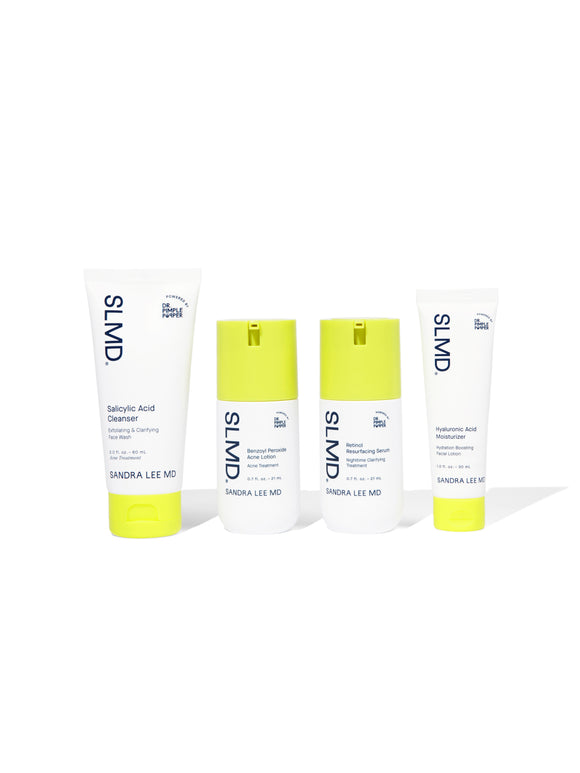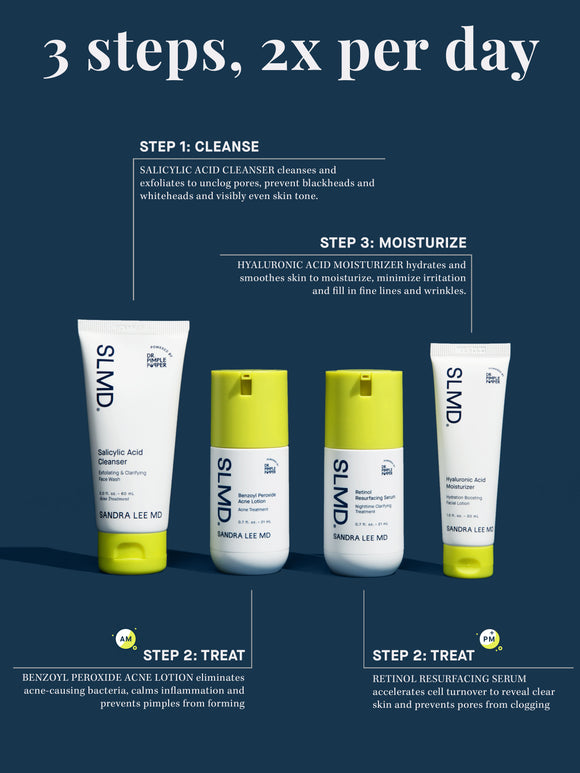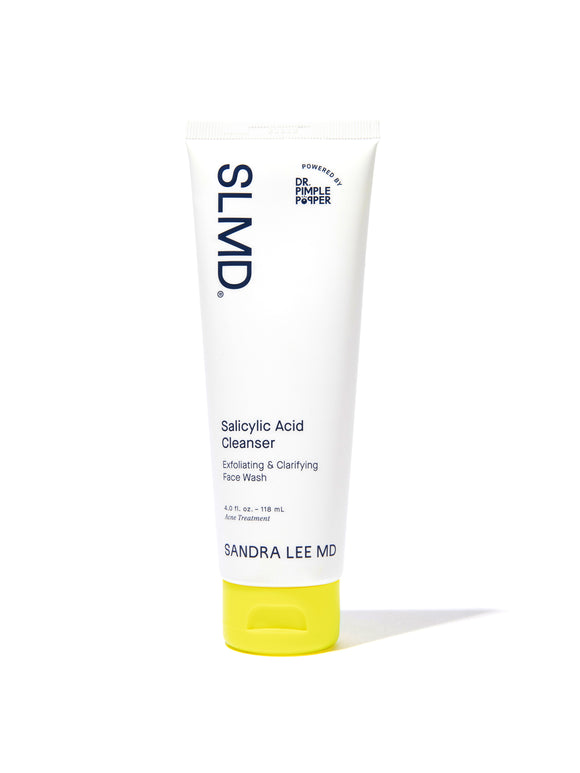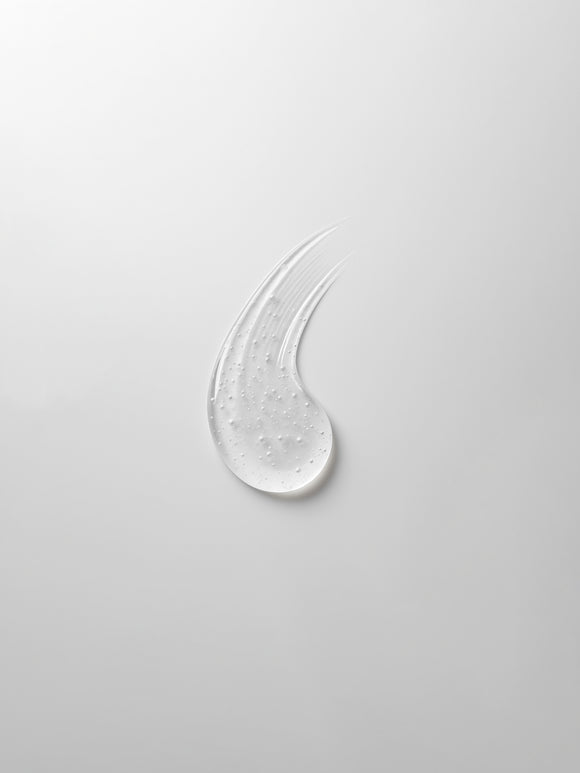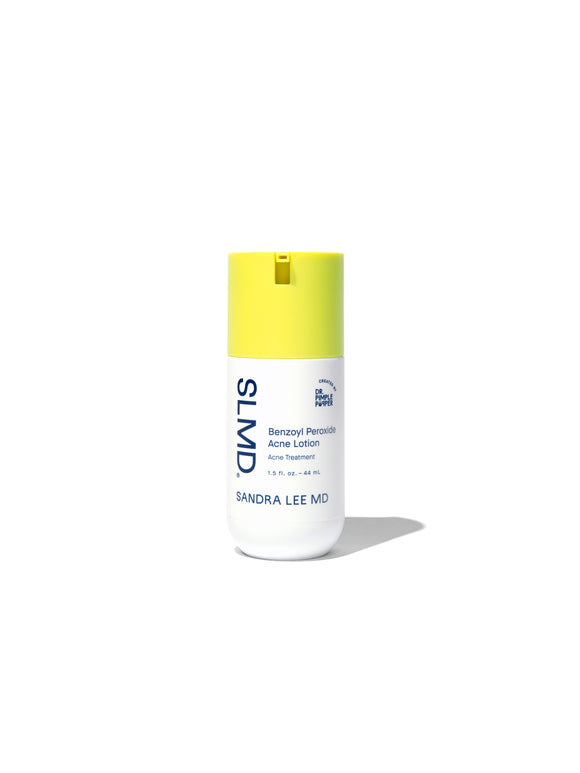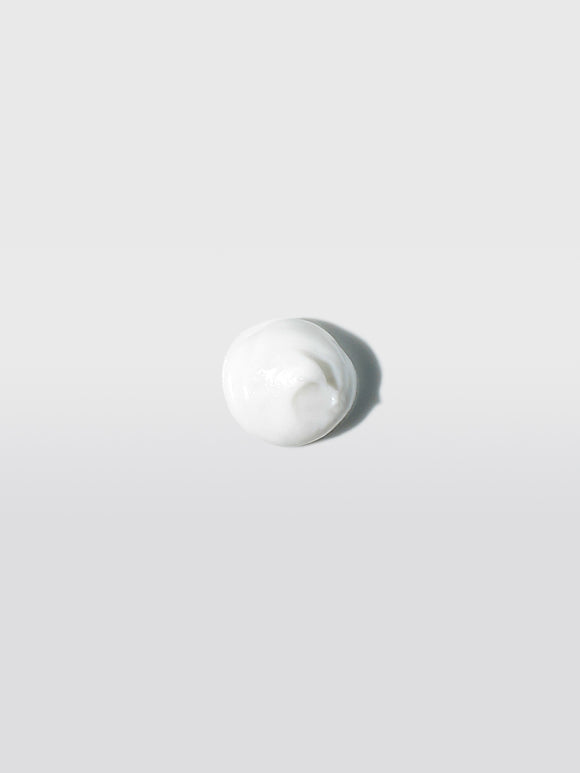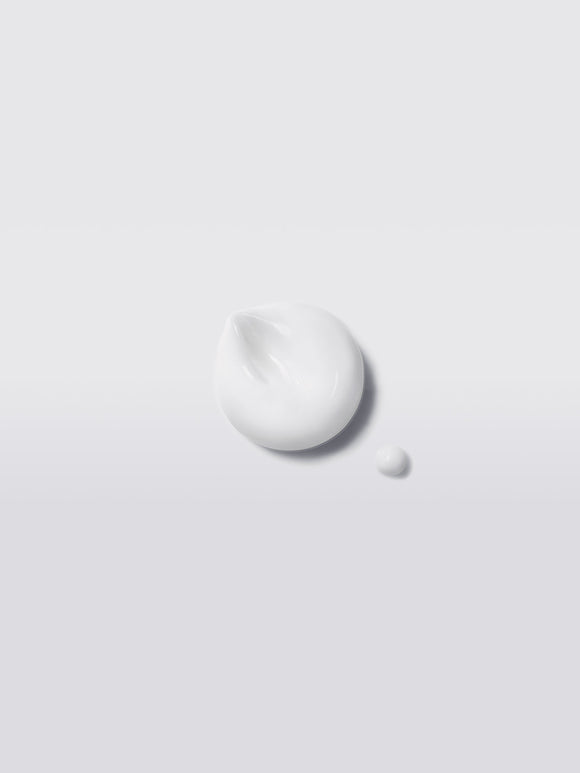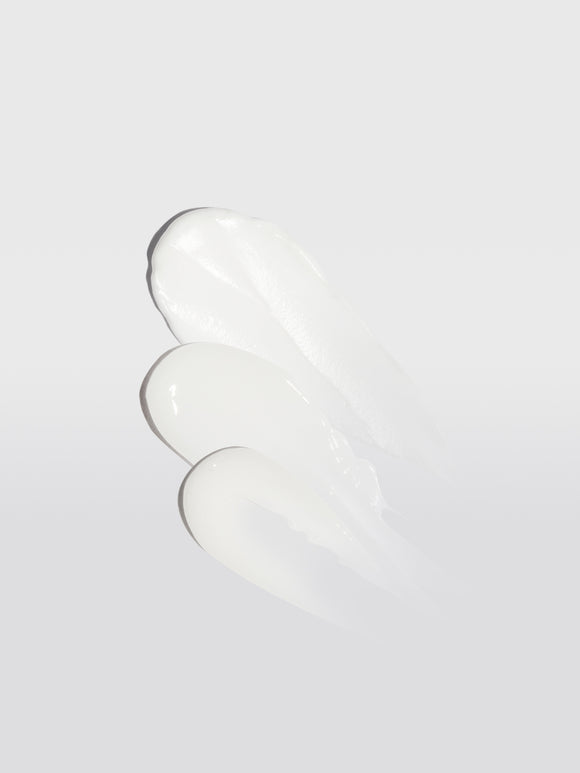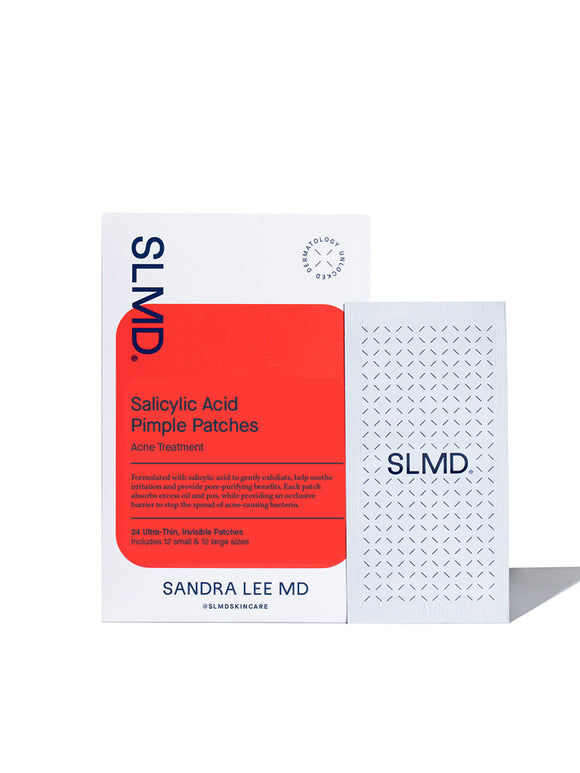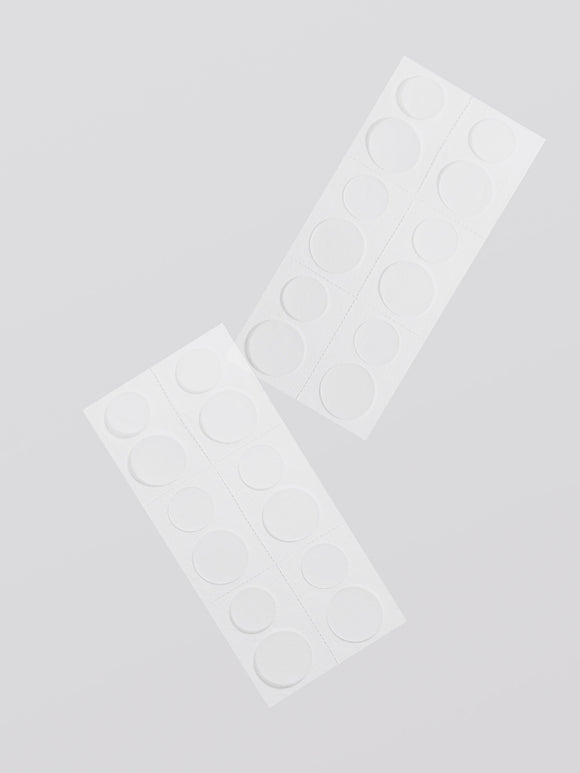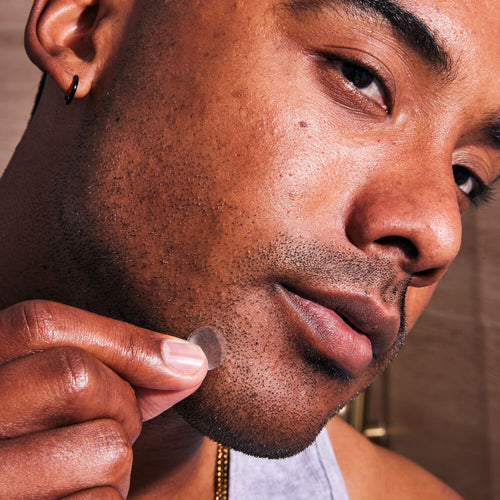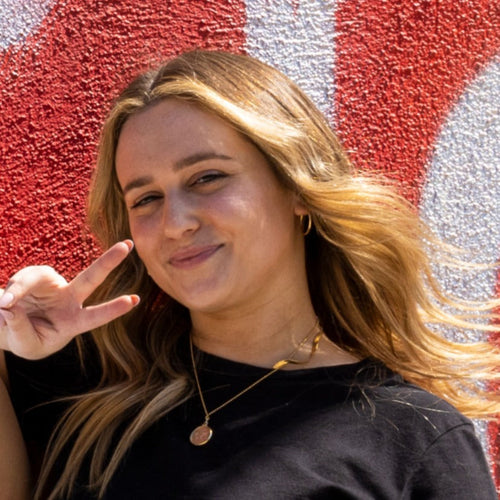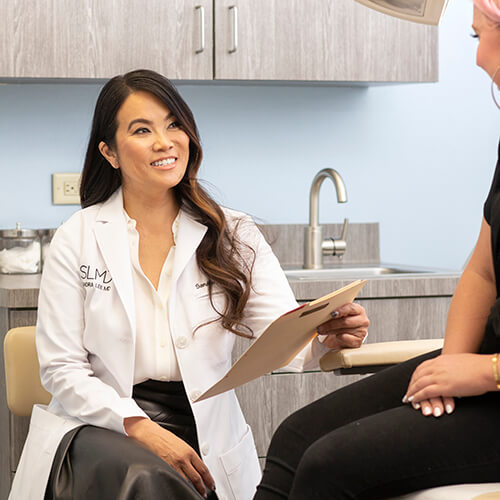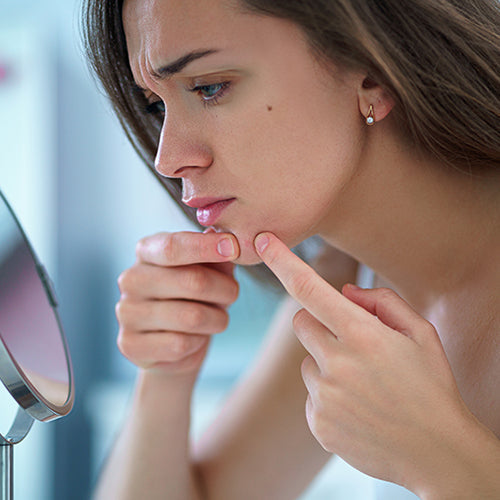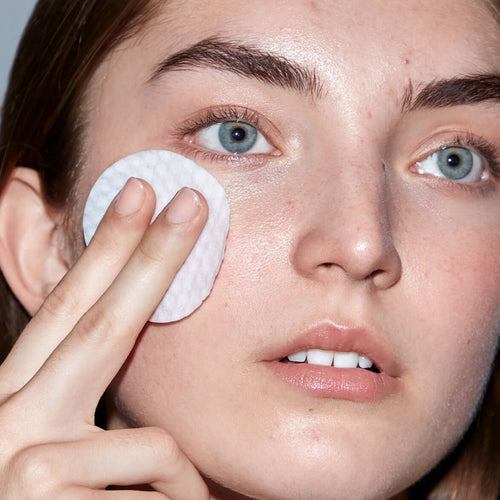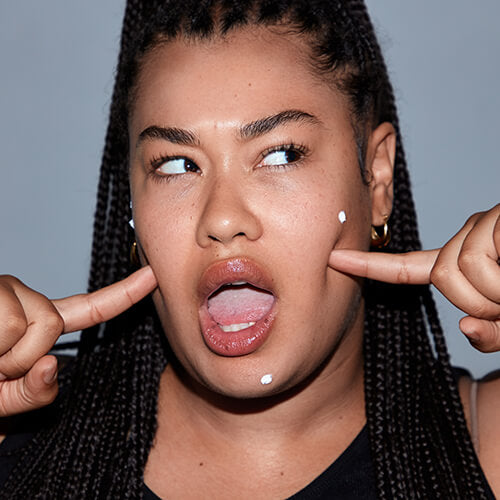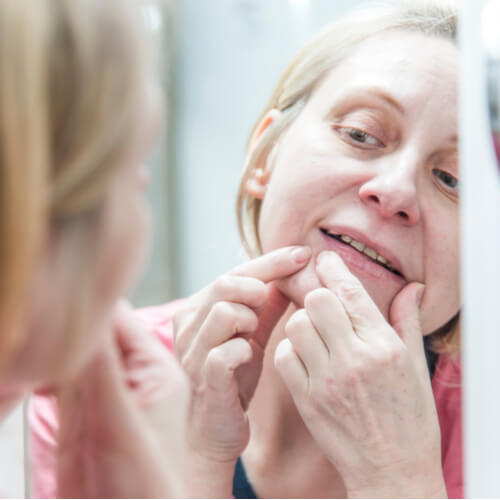
Managing Menopausal Acne: Causes and Top Treatments
Dr. Pimple Popper shares her expert tips for keeping skin healthy and clear as hormones shift.
Published:
5 minute read
As if hot flashes, mood swings, and weight gain weren’t enough, many women going through menopause experience a frustrating new challenge: acne. Menopausal acne is a type of hormonal breakout that often appears during perimenopause and menopause, and it tends to look and act differently than the acne you might have had as a teenager.
Dermatologist and SLMD Skincare founder Dr. Sandra Lee (aka Dr. Pimple Popper), explains how hormonal changes in menopause can lead to breakouts—and the best ways to manage and treat menopausal acne.
Article Quick Links
What is menopausal acne?
We’ve talked about the effect hormones have on breakouts before, and menopausal acne is no exception. During the teen years, a surge in hormones, particularly androgens, leads to an increase in sebum production, which clogs pores and causes acne. Menopausal acne, however, occurs due to a different type of hormonal imbalance.
As women approach menopause (perimenopause), estrogen and progesterone levels drop, while testosterone levels decline more gradually. This relative surplus of testosterone can persist after menopause, a condition known as postmenopausal hyperandrogenism. The imbalance leads to increased oil production, which can result in acne.
“The hormonal shifts in menopause trigger breakouts similar to what some women experience during their menstrual cycle," Dr. Lee explains. "But unlike teenage acne, menopausal acne often appears as deeper, cystic pimples.”
What does menopausal acne look like?
While all acne starts with clogged pores, menopausal acne typically presents differently than teen acne. Here’s how to identify it:
- Location: While teen acne usually affects the T-zone (forehead, nose, and chin), menopausal acne tends to appear along the chin and jawline, similar to other hormonal acne.
- Type: Menopausal acne often involves deep, cystic pimples, which are more likely to cause scarring and dark spots, known as post-inflammatory hyperpigmentation (PIH) if not treated effectively.
- Other symptoms: Acne may be accompanied by other androgen-related conditions such as excess facial hair (hirsutism) and hair thinning (alopecia).
Are some people more susceptible to menopausal acne?
Research suggests that as many as 26% of women in their 40s and 15% of women in their 50s experience acne during menopause. The exact reasons why some women develop menopausal acne while others don’t are still being studied, but several factors can increase susceptibility:
- Ovary and adrenal activity: The levels of estrogen, progesterone, and testosterone secreted during perimenopause and menopause vary from woman to woman, affecting acne development.
- Sensitivity to androgens: Some women are more sensitive to androgens (like DHEAS), which can increase acne susceptibility.
- Lifestyle factors: Stress, high-glycemic foods, cosmetics, smoking, UV exposure, and lack of sleep can all contribute to breakouts.
- Skin’s microbiome: Recent research suggests that imbalances in skin bacteria can contribute to breakouts.
- Inflammatory response: Some women experience stronger immune responses, leading to more inflammatory acne.
- Genetics: A family history of menopausal acne increases your likelihood of developing it.
Dr. Pimple Popper's Menopausal Acne Solutions
How do you treat menopausal acne?
Much like other types of acne, treating hormonal breakouts like menopausal acne centers around consistency and targeted solutions. Dr. Lee emphasizes the importance of using skincare products with proven acne-fighting ingredients while also addressing the unique needs of menopausal skin, which can be more sensitive and prone to dryness.
Because menopausal acne often involves deeper, cystic pimples, it carries a greater risk of scarring and post-inflammatory hyperpigmentation (PIH) — the dark spots that linger after a breakout has healed. Treating menopausal acne early and consistently is key to reducing the chances of PIH. Here are some of the most effective ingredients for treating both acne and hyperpigmentation:
- Salicylic acid: A beta hydroxy acid (BHA) that exfoliates dead skin cells and clears out clogged pores. This helps prevent breakouts and reduces inflammation, which in turn lowers the risk of developing PIH.
- Benzoyl peroxide: An antibacterial ingredient that kills acne-causing bacteria and reduces inflammation.
- Retinoids: These vitamin A derivatives increase cell turnover, which helps prevent dead skin from clogging pores and reduces the formation of acne. Retinoids also help fade dark spots from PIH and improve overall skin texture and tone.
- Hydration: Keeping menopausal skin moisturized is essential, as acne treatments can be drying. A non-comedogenic facial moisturizer helps protect the skin barrier and balance moisture levels, preventing irritation that can lead to more breakouts and PIH.
To reduce the likelihood of PIH and scarring, consistency in using these treatments is key, along with avoiding picking or squeezing acne, which can worsen inflammation and leave behind dark marks. Instead, treat individual pimples with targeted spot treatments.
Try: SLMD Acne System, an all-in-one kit that's easy to use and treats acne at every stage
Targeted Treatments for Menopausal Pimples
Prescription treatments for menopausal acne
For women whose menopausal acne doesn’t respond to over-the-counter treatments, oral medications can offer a solution. A common prescription treatment is spironolactone, a drug that blocks androgen receptors and reduces the impact of testosterone on oil glands. Many women see improvements in their acne within 3-6 months of starting spironolactone.
Dermatologists may also refer patients to gynecologists or endocrinologists to discuss hormone replacement therapy (HRT) options, particularly if acne is accompanied by other severe menopausal symptoms. While HRT is primarily used to manage symptoms like hot flashes or mood swings, balancing hormone levels can help improve acne in some cases.
Skincare adjustments for menopausal skin
As we age, skin becomes more delicate and prone to irritation. For this reason, women experiencing menopausal acne should make adjustments to their skincare routines:
- Start with gentle products: Begin with a hydrating cleanser and a lightweight, non-comedogenic moisturizer. Introduce active ingredients like retinoids or salicylic acid slowly to avoid irritating sensitive skin.
- Prioritize sunscreen: UV exposure can worsen post-inflammatory hyperpigmentation, which is more common with menopausal acne. Use a broad-spectrum sunscreen daily to protect your skin.
Dr. Pimple Popper answers your menopausal acne FAQs
Q: Can menopausal acne be prevented?
A: While you can’t completely prevent hormonal changes, adopting a consistent skincare routine and making healthy lifestyle choices — like managing stress and avoiding high-glycemic foods — can help reduce breakouts.
Q: How long does menopausal acne last?
A: Menopausal acne can persist for several years, especially during perimenopause. However, it tends to subside as hormone levels stabilize after menopause.
Q: What’s the best over-the-counter treatment for menopausal acne?
A: Ingredients like benzoyl peroxide, retinoids, and salicylic acid are highly effective at treating menopausal acne. Consistency is key when using these products.
Q: Does menopausal acne leave scars?
A: Menopausal acne, especially cystic breakouts, has a higher risk of scarring. Using products with retinoids and hydrating moisturizers can help minimize scars.

Dr. Lee's Last Word
Menopausal acne can be frustrating, especially when it seems like breakouts should be a thing of the past. But with the right skincare routine, most women can manage hormonal acne and keep it under control. If over-the-counter solutions aren’t enough, there are prescription options that can help.



